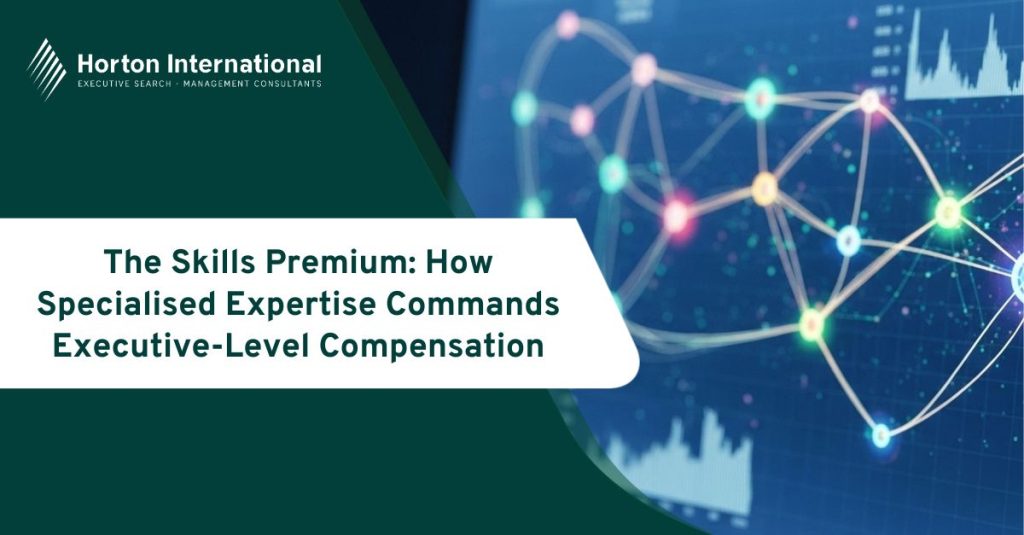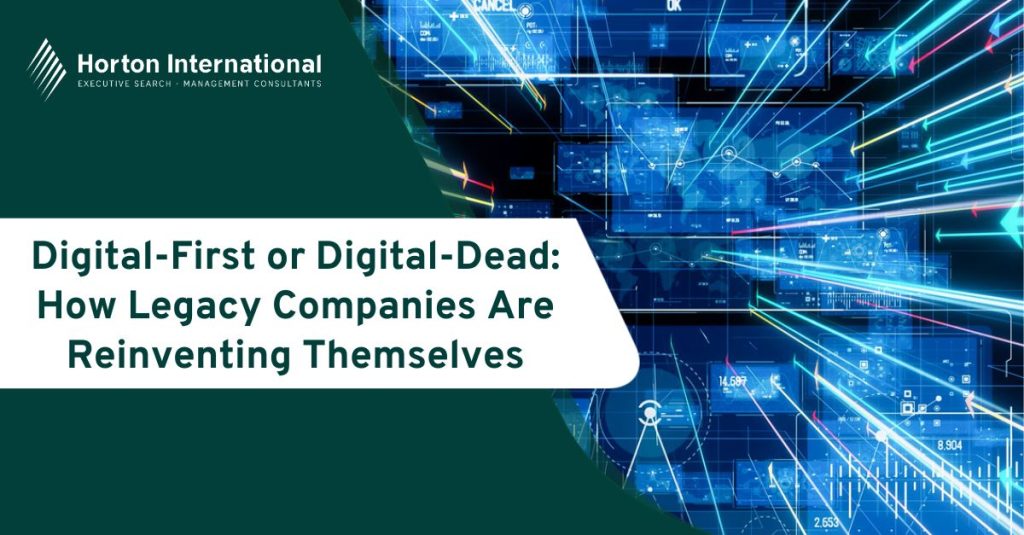When some C-suite executives leave their positions within the first year – victims of misalignment, lacklustre performance, or cultural dissonance – the traditional approach to succession planning becomes a multi-million pound gamble.[1] Where once C-suite succession followed predictable, hierarchical pathways, today’s business environment demands a more sophisticated approach to developing high-potential leaders who can navigate uncertainty from day one.
Traditional succession planning, with its rigid pathways, is giving way to ‘progression planning’. This paradigm shift acknowledges that leadership development is a marathon requiring extended processes that assess professionals at every level as high potential leaders. Today’s CEOs grapple with eight to ten critical issues simultaneously – double the number of a decade ago – demanding leaders who can navigate uncertainty with agility, resilience – and endurance.
Beyond the Corporate Ladder: Dynamic Leadership Pathways
The future of succession planning lies in career intelligence; sophisticated understanding of how skills and competencies can be dynamically mapped across different roles, moving beyond hierarchical thinking to embrace ‘sinuous’ leadership careers. These non-linear paths systematically move high-potential individuals across business areas, building comprehensive organisational understanding whilst developing multifaceted leadership capabilities. Such talent success strategies help tomorrow’s executives develop six critical traits:
- positive energy and personal balance
- servant leadership qualities
- continuous learning mindsets
- grit and resilience
- appropriate levity
- stewardship perspectives.
These characteristics require real-world experiences across varied organisational contexts rather than classroom training alone.
Why Your Best Performers Might Not Be Your Best Leaders
World class leadership pipeline development requires shifting focus from individual performance metrics to objective assessments that identify high-potential candidates who may lack traditional credentials but demonstrate essential leadership mindsets and capabilities. As an analogy – many hero’s journey films, from My Cousin Vinnie to Legally Blonde to Good Will Hunting – tell us that hidden facets of character and capacity are discovered via challenge, not cushioning.
Evidence based leadership profiling becomes crucial in this process. Boards and senior executives must pinpoint future leaders by identifying valuable (rather than required) mindsets, beliefs, values, and experiences whilst clearly defining organisational success parameters. This involves examining current C-suite competencies and identifying both existing strengths and critical gaps that must be addressed for future business growth.
For instance, as organisations increasingly require chief strategy officers (CSOs) to navigate digital transformation, merger and acquisition strategies, and emerging technology investments, succession planning must ensure potential candidates develop experience in strategic analysis, innovation frameworks, market expansion models, and start-up ecosystem evaluation. Such high potential development cannot be acquired through traditional functional roles alone but require deliberate exposure to cross-functional challenges and external market dynamics – maybe even to ‘dysfunctional’ environments such as secondments to white hat cybercrime charities or to police authorities working in white collar crime.
Building Leadership Factories, Not Training Programmes
Successful organisations create leadership factories; systematic approaches to identifying, developing, and mentoring high-potential talent. This model recognises that an effective executive development programme occurs through on-the-job experiences, mentorship, and real-world problem-solving rather than classroom settings alone.
Leadership factories establish clear attributes defining effective leadership within specific organisational contexts, embracing early exposure to complexity by deliberately placing high-potential managers in challenging situations with appropriate support. Senior executives personally lead succession management sessions, sharing experiences and creating meaningful dialogue about leadership challenges.[2]
Internal mobility through structured succession planning creates compelling employee value propositions (EVP) that combine career development opportunities with skill-building experiences. Again, let’s demystify; next generation employers like You Need A Budget have EVP as core to their success. They offer a remote-first work environment, four-day workweek, and emphasise meaningful collaboration alongside a generous holiday policy that includes a two-week company-wide break every December. If it sounds too good to be true, they also have a focus on ‘humble confidence’ that encourages continuous learning at every level of the organisation. As a result 96% of their employees say they’re a great place to work.[3]
This kind of approach addresses the modern workforce’s desire for autonomy, empowerment, and growth opportunities, whilst ensuring organisations develop leaders who understand their specific cultural contexts and strategic challenges. Leadership pipeline optimisation benefits both employers and employees, adds value internally and in the marketplace and supports growth.
The India Effect: How Mobility Transforms Careers
The strategic importance of mobility in leadership development is exemplified by recent developments in the Indian market, where organisations are increasingly recognising international assignments as transformative career experiences. According to recent research, 81% of Indian employees view mobility assignments as career-transformative, with 62% ranking skill development as the primary motivator for pursuing international opportunities.[4]
This perspective aligns perfectly with next-generation succession planning approaches. Indian employers report that their primary 2025 focus involves better integrating talent strategy with mobility programmes, using international assignments to attract, retain, and develop high-potential leaders whilst enhancing overall employee experience.
The benefits extend beyond individual development. From employers’ perspectives, leadership talent mobility addresses critical skills gaps whilst adding organisational value. Significantly, 47% of Indian employers believe that high-performance and future leader programmes have the most substantial impact on employee growth, indicating a clear recognition of mobility’s role in succession planning.
The flexibility expectations of modern talent further support dynamic career intelligence approaches. With 70% of Indian employees prioritising flexibility in mobility experiences and 50% expressing willingness to consider virtual assignments, organisations can create diverse development pathways that accommodate different career stages and personal circumstances whilst building leadership capabilities.
The AI-Powered Succession Advantage
Progressive organisations leverage generative AI to enhance succession planning by identifying skill shortages and predicting future requirements. However, successful implementation requires addressing data security concerns and building internal expertise.[5]
Effective implementation demands establishing realistic, evidence-based leadership profiles aligned with strategic objectives, comprehensive candidate assessment beyond immediate performance, and personalised learning plans with meaningful project assignments. Organisations must also create feedback mechanisms providing transparency about career pathways whilst demonstrating commitment to high-potential talent development.
The Bottom Line: Succession as Competitive Advantage
The transformation from traditional, if strategic, succession planning to dynamic leadership mobility represents a strategic imperative for organisational survival in an increasingly complex business environment. Organisations that embrace career intelligence, implement future leadership development, and create flexible mobility opportunities position themselves to thrive regardless of future disruptions.
As business complexity accelerates and leadership tenures shorten, organisations must build deeper benches of capable leaders. Those treating leadership development as a core capability will create sustainable competitive advantages through superior leadership capabilities. In today’s volatile environment, such preparation is essential for long-term success.
Sources
[1] https://www.directorsandboards.com/board-duties/succession-planning/the-transition-from-succession-to-performance-acceleration-in-the-c-suite
[2] https://www.mckinsey.com/capabilities/strategy-and-corporate-finance/our-insights/the-art-of-21st-century-leadership-from-succession-planning-to-building-a-leadership-factory
[3] https://www.greatplacetowork.com/resources/blog/employee-value-proposition-definition-and-strategies/
[4] https://www.ey.com/en_in/newsroom/2025/07/mobility-key-differentiator-in-global-talent-strategy-81-percent-indian-employees-find-it-to-be-career-transforming-ey-report
[5] https://www.forbes.com/sites/tomaspremuzic/2025/02/11/can-ai-fix-succession-planning//








